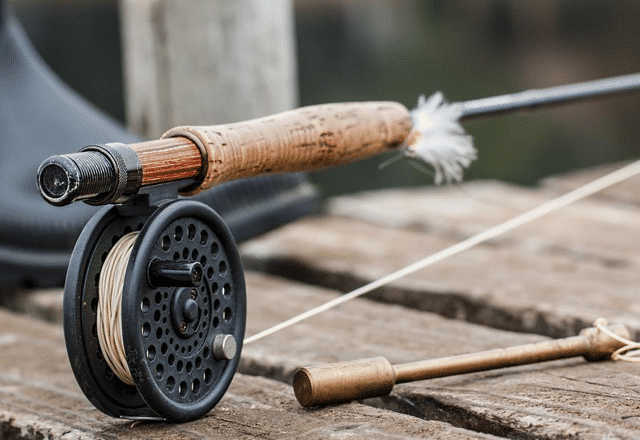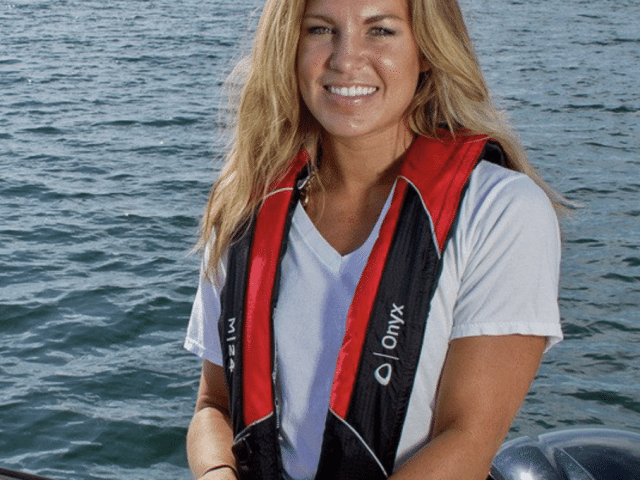There are many benefits to owning a boat, from pulling kids on towable tubes to practicing your wakeboarding skills and everything else in between. Yet all boat owners need to know how to safely dock their boat. Everyone has seen a boat or dock fender – the oblong or round inflatable (sometimes foam-filled) tube that creates a barrier between your boat and dock. There’s also dock edging – a soft plastic molding that’s attached to the edge of the dock. These are both designed to prevent damage to the boat and dock when contact occurs. However, for a larger or nicer boat, you may not want it to make contact with the dock at all, and this is where mooring whips can help.
What is a Mooring Whip?
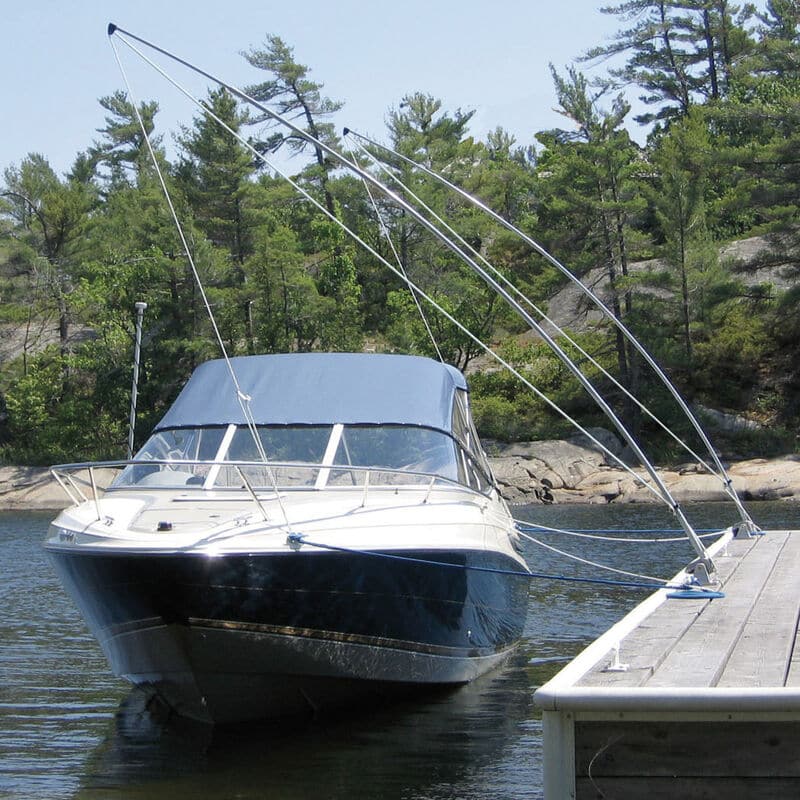
Mooring whips are specially designed fiberglass poles that resemble long fishing rods. These poles are typically mounted to the edge of a dock using durable aluminum bases. A marine-grade rope runs from the base of the pole up through a pulley at the top and then back down.
How Do Mooring Whips Work?
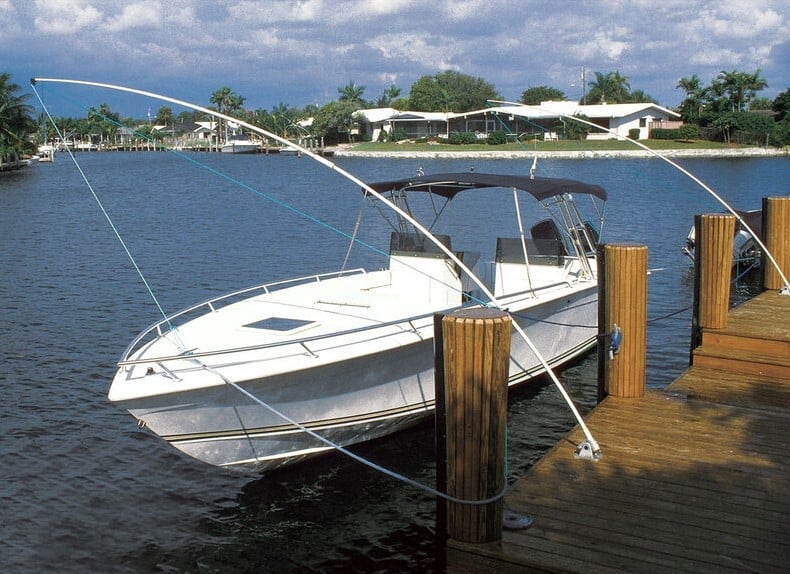
Unlike fenders and edging, mooring whips prevent contact from occurring in the first place as they use variable pressure to pull your boat away from the dock and hold it in place. When the end of the line running through the pulley is tied to a cleat on your boat, the poles bend out and away from the dock.
Spring lines are used to prevent the boat from drifting forward or back. These spring lines can have a minimum and maximum length, depending on the design of the whips.
Mooring whips keep your boat away from the dock while still providing easy access to it when you’re ready to hit the water.
Standard Versus Premium Mooring Whips
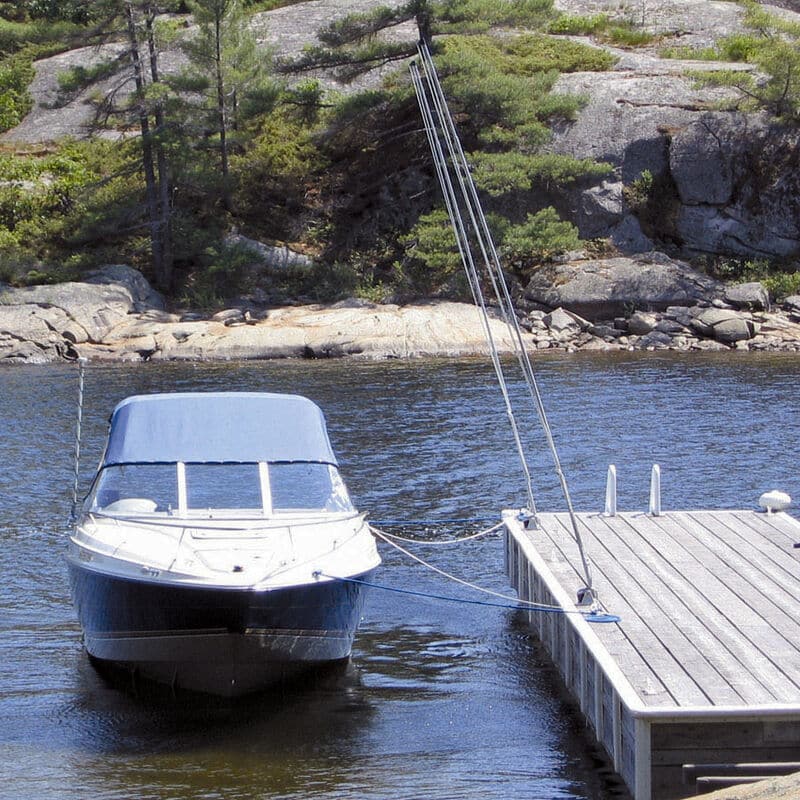
There are two different types of mooring whips, standard and premium. The standard whips feature a fixed angle pole, usually 60 degrees, and are common for ski boats, runabouts, center consoles, and bass boats. Premium whips have a pivoting pole that returns to the vertical position when not in use. Premium poles are also usually thicker since they are designed for sailboats and larger, heavier, or high-profile boats.
Mooring Whips Versus Mooring Arms
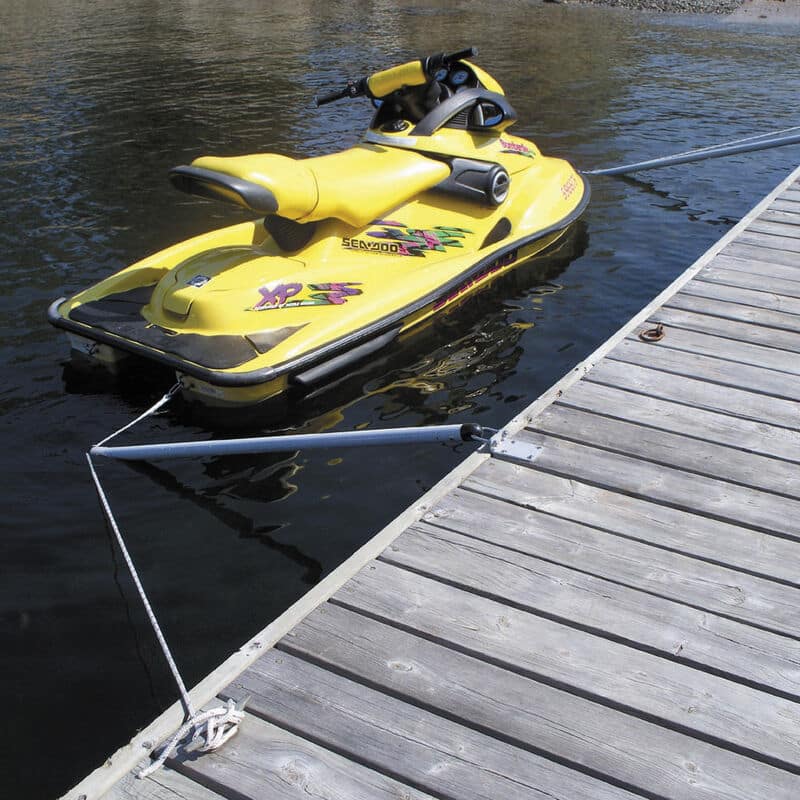
If you have a small to mid-size boat or personal watercraft (PWC), whips may not be for you. However, there is still another mooring option – mooring arms. These are like whips in that they push your boat out away from the dock, but that’s where the similarities end. Arms are fixed fiberglass poles that attach directly to the dock and extend straight out toward the boat. They are more cost-effective than whips but have greater weight and length restrictions.
How to Choose the Correct Mooring Whips
The two main considerations for choosing the correct mooring whips are weight and length. The standard whips are typically offered for boats 18’-33’ long and 2,500 lbs. – 20,000 lbs. whereas premium whips are typically for boats 33’-56’ long and 20,000 lbs. – 48,000 lbs.
Overton’s Mooring Whip Picks
Boats up to 2,000 lbs.: Dockmate Mooring Arms
Boats up to 18’ long and 2,500 lbs.: Dockmate Deluxe Mooring Whips 8′
Boats up to 23’ long and 5,000 lbs.: Dockmate Deluxe Mooring Whips 12′
Boats up to 28’ long and 10,000 lbs.: Dockmate Deluxe Mooring Whips 14′
Boats up to 33’ long and 20,000 lbs.: Dockmate Deluxe Mooring Whips, 16′
For more choices, check out our entire selection of Mooring Whips & Buoys.
How to Install Mooring Whips
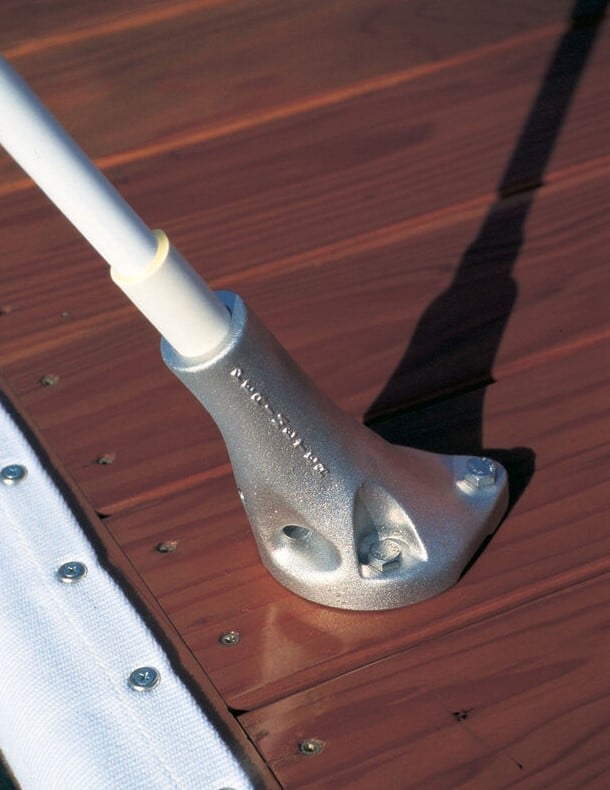
The instructions for installing whips on the edge of your dock will vary depending on the manufacturer. Most smaller boats require two whips to secure the fore and aft cleats, so you’ll need to ensure the whips are spread the correct distance apart to hold your boat in place.
Most manufacturers recommend a whip separation that matches two-thirds of the boat’s overall length. It’s best to install the mooring whips on the side of the dock with the most protection from the wind.
The deck must be in good condition for securing the base. If not, the base can pull out over time. If necessary, you may need to replace the deck boards or use a reinforcement plate underneath.
Here are some basic steps for installing mooring whips:
1. Align bases with your boat’s cleats.
2. Secure the bases to your dock.
3. Assemble the whip poles.
4. Feed the whip lines through the rollers at the tips of the whip poles.
5. Install the poles into the bases.
6. Attach the pole cleats.
Remember that your owner’s manual is your best resource for exact installation instructions.
How to Use Mooring Whips to Protect Your Boat
Once you’ve followed the manufacturer’s detailed instructions for installing your dock whips, it’s time to secure and adjust the whips.
Step 1: Attach Lines
Start with the bow and stern lines running from the whip poles to your boat. Don’t tie them to your boat’s cleats yet but connect them to your boat for easy access. The eyelet at the bow is a great place for your bow line, and the port-side handle works great for the stern line.
Then attach spring lines to the fore and aft anchor points. Now you can return and secure the bow and stern whip lines to your boat’s cleats using a cleat hitch knot for each.
Step 2: Tighten Bow Whip Line
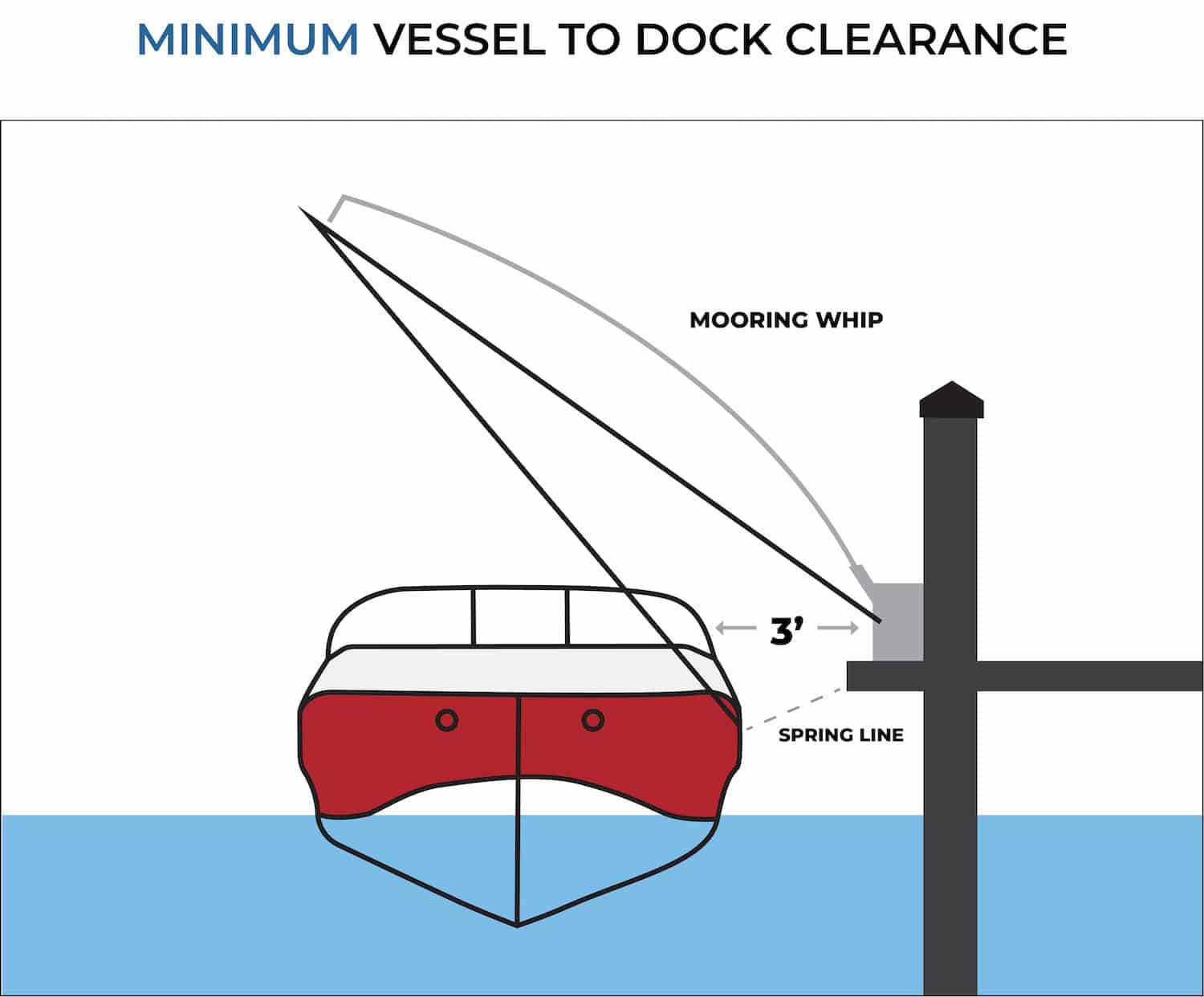
Now pull your boat over to the dock carefully and climb out. Move to the bow whip line and untie it from the cleats on the whip and the base. Pull the line to tighten it, and you should see the whip begin to bend.
The poles should be slightly bent but without too much tension. Your owner’s manual will provide recommendations on the proper amount of tension to place on your mooring whips.
After tightening the bow line, allow the boat to float away from the dock until the bow, stern, and spring lines stop it. You can then readjust the tension if needed.
Step 3: Repeat for the Stern Whip Line
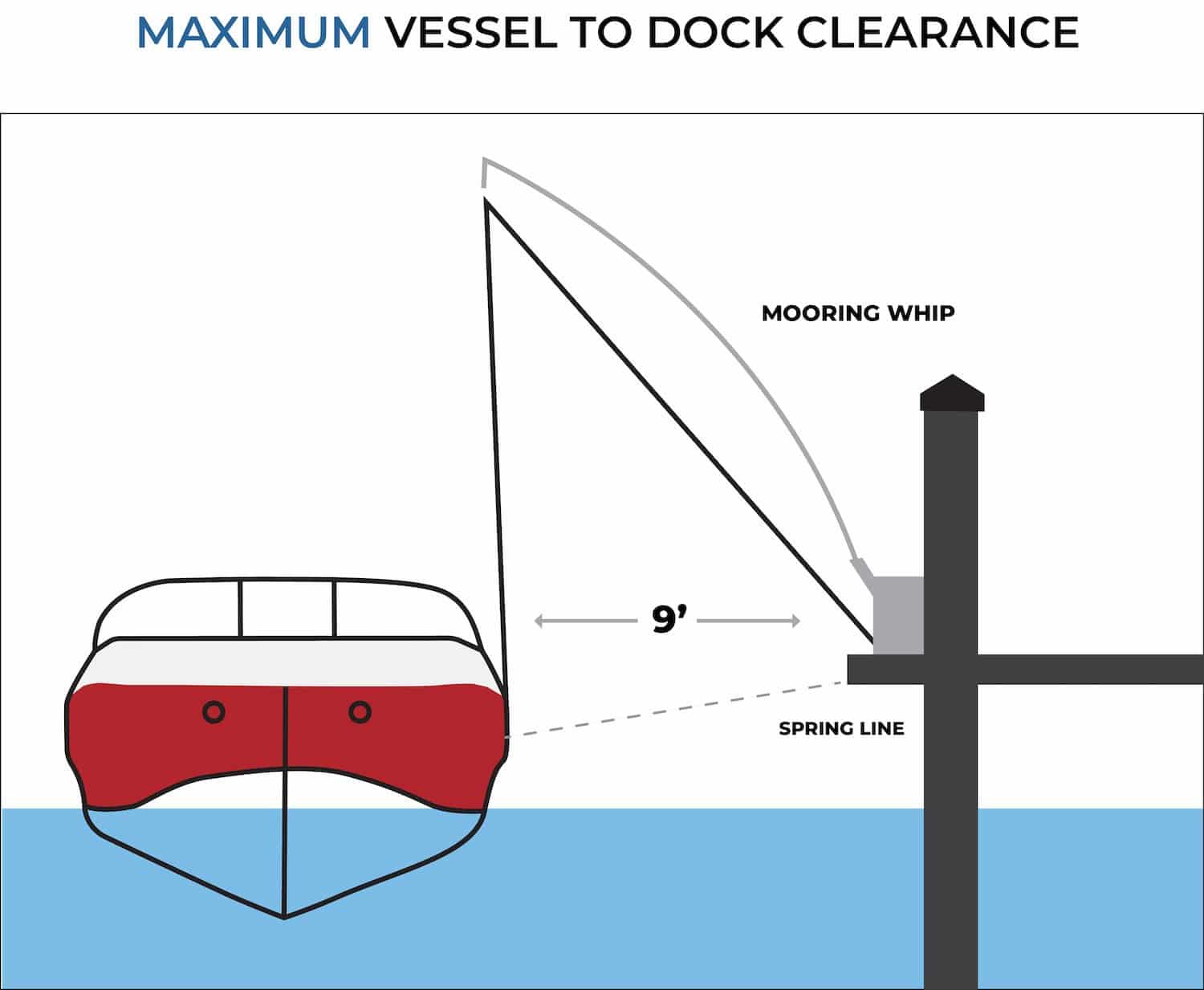
Move to the stern whip line and repeat the process. You want the same amount of bend in both whips to avoid placing too much stress on one. Both whip lines should be tied to the base and upper cleats on their respective whips using cleat hitch knots.
Step 4: Secure Additional Bow and Stern Lines
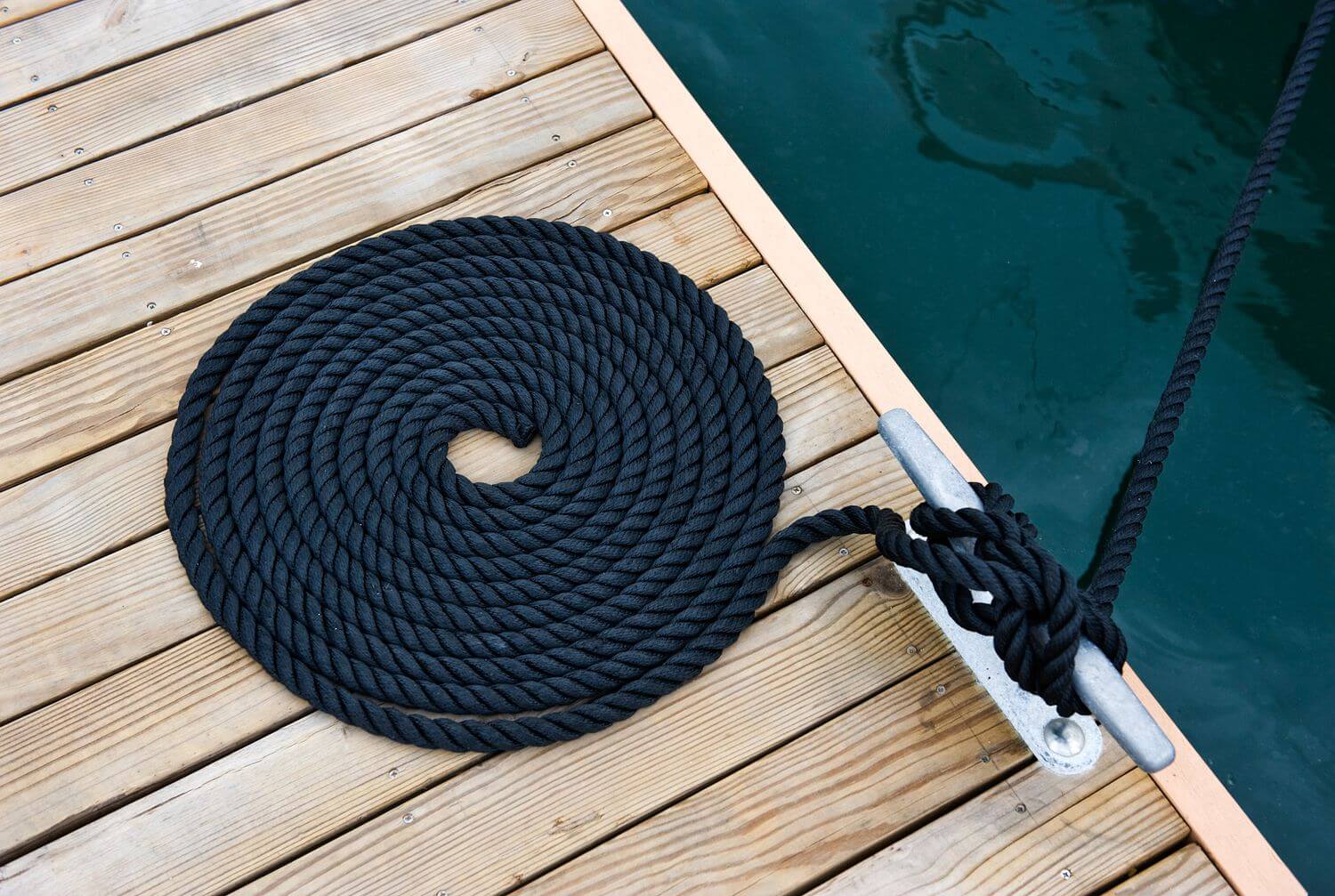
Many boaters also secure additional lines from the bow and stern to the dock. These can be attached to the same dock cleats as your spring lines and affixed to the bow eye and the port-side handle on your boat.
How to Untie Your Boat from Mooring Whips
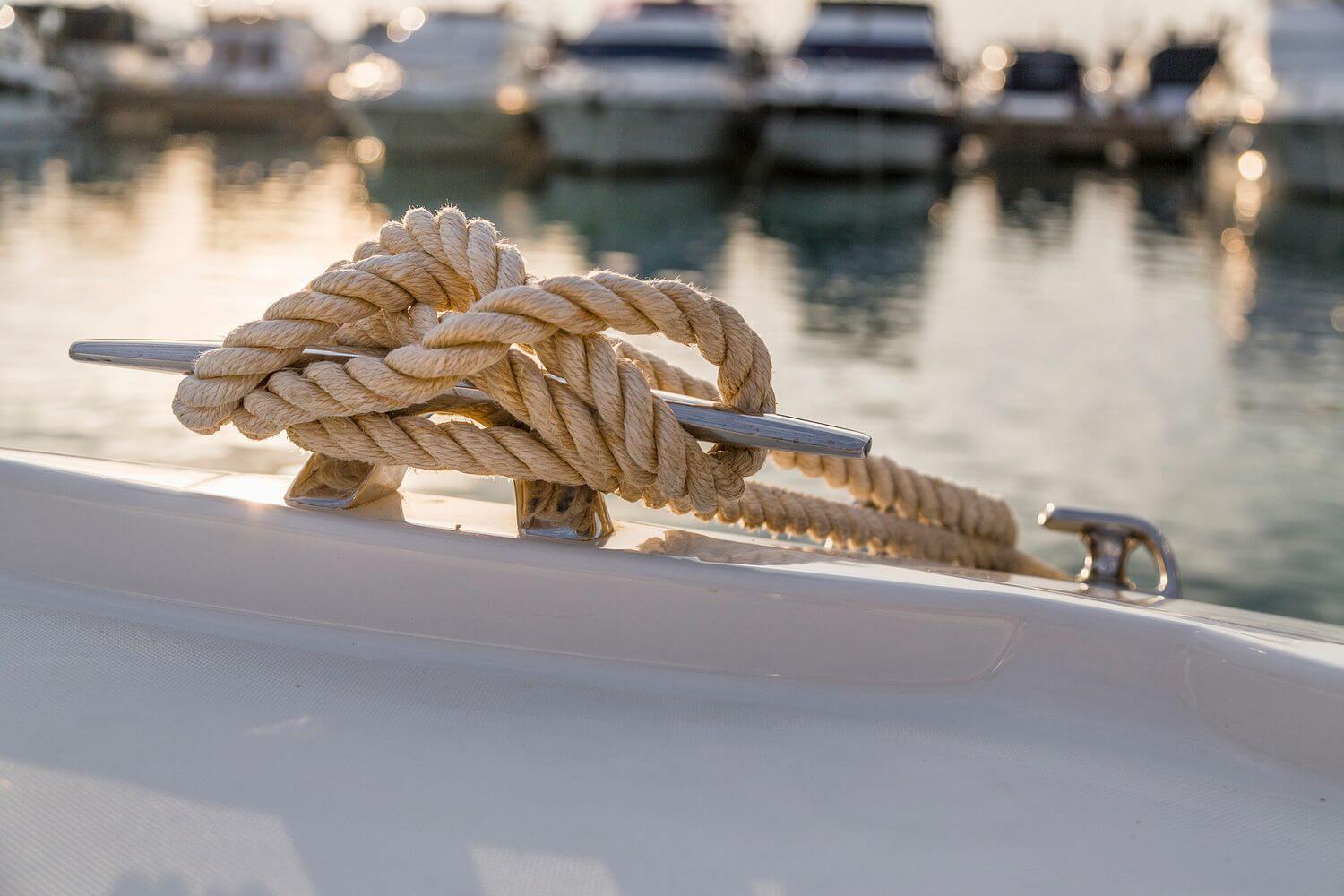
When you’re ready to take your boat out, start by untying the bow line from the base and upper cleats on the whip. Let the tension out of the line but be careful not to let go of it.
Tie a figure-eight knot at the end of the whip line to prevent it from running out through the line roller if you happen to lose your grip.
Once you let off the tension, pass the line under the base cleat and secure it to the upper cleat with a cleat hitch knot. Repeat this process to release tension from the stern whip line and secure it.
Use the lines to pull your boat toward the dock and climb in. Untie the bow and stern lines from their cleats on your boat and hang the lines from the upper cleats on the whips to keep them out of the way.
Use the lines to pull your boat toward the dock and climb in. Untie the bow and stern lines from their cleats on your boat and hang the lines from the upper cleats on the whips to keep them out of the way.
Next, unhook the spring lines from the bow and stern of your boat and place the unhooked ends on the dock. Finally, disconnect the bow and stern lines from your boat and toss them onto the dock before gently shoving off and idling clear of the dock.
If you still have questions about using mooring whips to protect your boat, please share them in the comments below.



